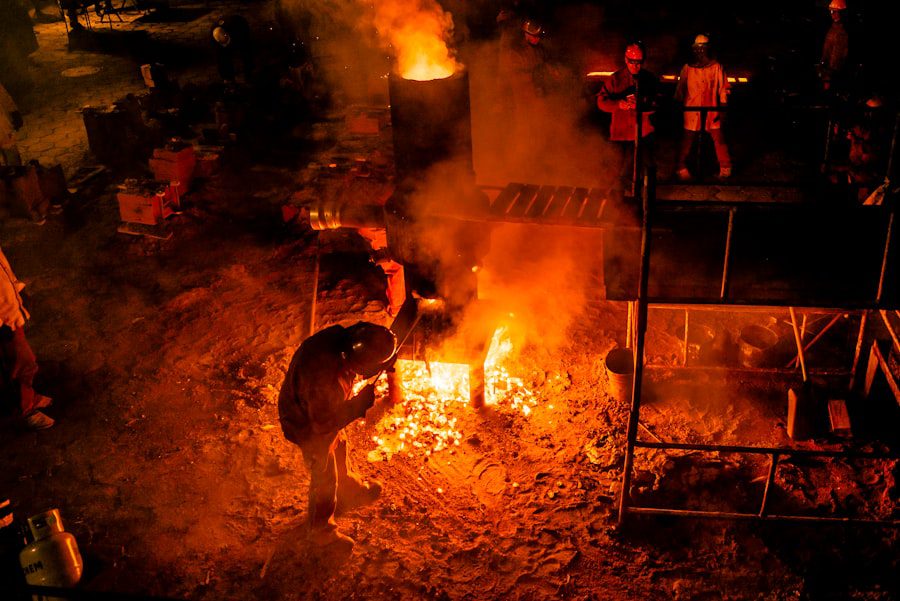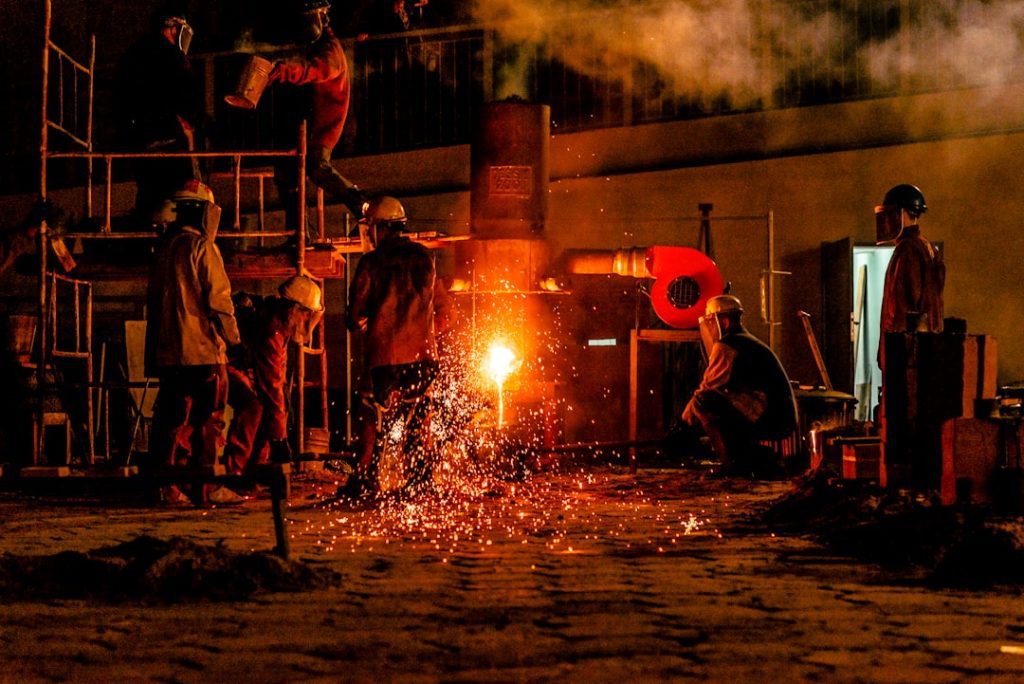Efficient industrial heating solutions are crucial for the development and growth of the industrial sector in Afghanistan. The country’s industrial sector plays a significant role in its economy, contributing to employment, GDP, and overall economic development. However, the lack of efficient heating solutions poses a challenge to the growth and sustainability of this sector. Industrial heating is essential for various processes such as manufacturing, food processing, and chemical production. Without efficient heating solutions, these industries may face operational challenges, increased production costs, and reduced competitiveness in the global market.
Moreover, efficient industrial heating solutions are vital for improving energy efficiency and reducing environmental impact. Afghanistan faces energy shortages and relies heavily on imported energy sources, making it crucial to optimize energy use in the industrial sector. By implementing efficient heating solutions, industries can reduce their energy consumption, lower their carbon footprint, and contribute to sustainable development. Additionally, efficient heating solutions can help industries comply with environmental regulations and improve their corporate social responsibility. Therefore, investing in efficient industrial heating solutions is not only important for the growth and competitiveness of the industrial sector but also for the sustainable development of Afghanistan as a whole.
Key Takeaways
- Efficient industrial heating solutions are crucial for the development and growth of industries in Afghanistan.
- Challenges such as unreliable power supply and high fuel costs need to be considered when implementing industrial heating solutions in Afghanistan.
- Energy-efficient heating technologies, such as solar thermal and biomass heating, can help industries in Afghanistan reduce their energy consumption and costs.
- Renewable energy sources, such as solar and wind power, can play a significant role in providing sustainable heating solutions for industries in Afghanistan.
- Government incentives and policies are essential for promoting the adoption of efficient industrial heating solutions in Afghanistan and supporting the transition to renewable energy sources.
Challenges and Considerations for Industrial Heating in Afghanistan
Afghanistan faces several challenges and considerations when it comes to industrial heating. One of the primary challenges is the lack of access to reliable and affordable energy sources. Many industries rely on traditional fuels such as coal, wood, and diesel for heating, which are not only expensive but also contribute to air pollution and environmental degradation. The high cost of energy and the unreliable supply of traditional fuels pose a significant barrier to the adoption of efficient heating technologies in the industrial sector.
Furthermore, the country’s harsh climate and geographical location present additional challenges for industrial heating. Afghanistan experiences extreme temperatures, with cold winters and hot summers, which require industries to invest in heating and cooling systems that can withstand these conditions. Additionally, the remote and rural nature of many industrial facilities makes it difficult to access modern heating technologies and maintenance services. As a result, many industries continue to rely on outdated and inefficient heating systems, hindering their productivity and competitiveness.
In light of these challenges, it is essential for industries in Afghanistan to consider alternative heating technologies that are cost-effective, environmentally friendly, and suitable for the country’s climate and geographical conditions. By addressing these considerations, industries can improve their operational efficiency, reduce their environmental impact, and contribute to the overall economic development of Afghanistan.
Energy-Efficient Heating Technologies for Industrial Use in Afghanistan
There are several energy-efficient heating technologies that are suitable for industrial use in Afghanistan. One such technology is solar thermal heating, which harnesses the sun’s energy to generate heat for industrial processes. Solar thermal systems can be used for water heating, space heating, and industrial processes such as drying and sterilization. These systems are particularly well-suited for Afghanistan’s sunny climate and can help industries reduce their reliance on traditional fuels while lowering their energy costs.
Another energy-efficient heating technology is biomass heating, which utilizes organic materials such as wood chips, agricultural residues, and animal waste to generate heat. Biomass heating systems can be used for space heating, water heating, and steam generation in industrial facilities. Given Afghanistan’s abundant agricultural resources, biomass heating presents a sustainable and cost-effective alternative to traditional fuels for industrial heating.
Furthermore, heat pumps are another energy-efficient heating technology that can be used in industrial applications. Heat pumps transfer heat from one location to another using electricity, making them a clean and efficient option for industrial heating. Heat pumps can provide both heating and cooling for industrial processes, making them versatile and suitable for Afghanistan’s varying climate conditions.
By adopting these energy-efficient heating technologies, industries in Afghanistan can improve their energy efficiency, reduce their reliance on traditional fuels, and lower their operating costs. These technologies also offer environmental benefits by reducing greenhouse gas emissions and air pollution, contributing to a more sustainable industrial sector in Afghanistan.
The Role of Renewable Energy in Industrial Heating Solutions in Afghanistan
| Metrics | Data |
|---|---|
| Renewable Energy Source | Solar, Biomass, Wind |
| Industrial Heating Solutions | Boilers, Furnaces, Dryers |
| Energy Consumption | XX MWh/year |
| CO2 Emissions Reduction | XX tons/year |
| Investment Cost | XX USD |
Renewable energy plays a crucial role in providing sustainable industrial heating solutions in Afghanistan. The country has abundant renewable energy resources such as solar, wind, hydroelectric, and biomass, which can be harnessed to meet the industrial sector’s heating needs. By utilizing renewable energy sources for industrial heating, Afghanistan can reduce its dependence on imported fossil fuels, improve energy security, and mitigate the environmental impact of industrial activities.
Solar energy is one of the most promising renewable energy sources for industrial heating in Afghanistan. The country receives ample sunlight throughout the year, making solar thermal systems an ideal solution for meeting industrial heating requirements. Solar thermal systems can provide heat for various industrial processes such as water heating, space heating, and drying, offering a reliable and sustainable alternative to traditional fuels.
Wind energy also holds potential for industrial heating applications in Afghanistan. Wind turbines can be used to generate electricity, which can then be used to power electric heating systems or heat pumps for industrial processes. By integrating wind energy into industrial heating solutions, Afghanistan can diversify its energy mix and reduce its reliance on fossil fuels.
Furthermore, biomass energy presents an opportunity for sustainable industrial heating in Afghanistan. The country’s agricultural sector produces significant amounts of organic waste that can be used as feedstock for biomass heating systems. By converting agricultural residues into heat energy, industries can reduce their environmental impact while supporting the agricultural economy.
Overall, renewable energy has the potential to transform the industrial heating landscape in Afghanistan by providing clean, reliable, and cost-effective alternatives to traditional fuels. By embracing renewable energy solutions, industries can contribute to the country’s energy transition towards a more sustainable and resilient future.
Government Incentives and Policies for Promoting Efficient Industrial Heating in Afghanistan
The Afghan government plays a crucial role in promoting efficient industrial heating through incentives and policies that support the adoption of clean and sustainable technologies. One such incentive is financial support in the form of grants or subsidies for industries that invest in energy-efficient heating systems. These financial incentives can help offset the initial capital costs of upgrading to efficient heating technologies, making it more accessible for industries to make the transition.
Additionally, the government can implement tax incentives or rebates for industries that demonstrate a commitment to improving their energy efficiency and reducing their environmental impact through efficient heating solutions. By providing tax breaks or financial rewards for adopting clean technologies, the government can encourage industries to prioritize energy efficiency in their operations.
Furthermore, the implementation of regulatory policies such as energy efficiency standards and emissions limits can drive industries towards adopting efficient heating technologies. By setting clear guidelines and targets for energy efficiency and emissions reductions, the government can create a regulatory environment that incentivizes industries to invest in clean and sustainable heating solutions.
Moreover, capacity-building programs and technical assistance can support industries in adopting efficient heating technologies by providing training, education, and resources to help them navigate the transition. By equipping industries with the knowledge and skills needed to implement efficient heating solutions, the government can facilitate the widespread adoption of clean technologies across various industrial sectors.
Overall, government incentives and policies play a critical role in promoting efficient industrial heating in Afghanistan by creating a supportive environment for industries to invest in clean and sustainable technologies. By leveraging these incentives and policies, the government can drive the transition towards a more sustainable and resilient industrial sector in Afghanistan.
Case Studies of Successful Industrial Heating Solutions in Afghanistan

Several case studies demonstrate successful implementation of efficient industrial heating solutions in Afghanistan. One such example is the use of solar thermal systems for water heating in food processing facilities. By installing solar collectors to heat water for cleaning and processing food products, these facilities have reduced their reliance on traditional fuels while lowering their operating costs. This has not only improved their energy efficiency but also enhanced their sustainability credentials in the market.
Another case study involves the adoption of biomass heating systems in textile manufacturing plants. These plants have implemented biomass boilers that utilize agricultural residues as fuel to generate steam for dyeing and drying textiles. By switching from fossil fuels to biomass, these plants have reduced their carbon footprint while supporting local agriculture by utilizing agricultural waste as a renewable energy source.
Furthermore, there are examples of industries using heat pumps for space heating and cooling in manufacturing facilities. By leveraging heat pump technology, these facilities have achieved significant energy savings while maintaining comfortable working conditions for their employees. This has improved their operational efficiency while reducing their environmental impact through lower electricity consumption.
These case studies highlight the diverse range of efficient industrial heating solutions that have been successfully implemented in Afghanistan. By learning from these examples, other industries can gain insights into the benefits and challenges of adopting clean technologies while contributing to the overall sustainability of the industrial sector.
Future Trends and Innovations in Industrial Heating Solutions in Afghanistan
The future of industrial heating solutions in Afghanistan is poised for exciting developments with emerging trends and innovations that promise to transform the sector. One such trend is the integration of smart technologies into industrial heating systems. Smart thermostats, sensors, and control systems can optimize energy use by adjusting heating levels based on real-time demand and environmental conditions. This trend towards smart heating solutions will enable industries to achieve greater energy efficiency while reducing operational costs.
Another future trend is the advancement of hybrid heating systems that combine multiple renewable energy sources such as solar, wind, and biomass with traditional fuels or electricity. These hybrid systems offer greater flexibility and reliability by leveraging multiple energy sources to meet industrial heating needs while ensuring uninterrupted operations.
Furthermore, there is growing interest in decentralized heating solutions that empower individual industrial facilities to generate their own heat using on-site renewable energy resources. Decentralized heating systems offer greater resilience against supply disruptions while reducing transmission losses associated with centralized energy generation.
Innovations in thermal energy storage technologies also hold promise for the future of industrial heating in Afghanistan. Thermal storage systems can capture excess heat generated during off-peak hours or from renewable sources and store it for later use when demand is high. This innovation can help industries optimize their energy use while reducing their reliance on grid electricity or traditional fuels.
Overall, these future trends and innovations signal a shift towards more sustainable, resilient, and cost-effective industrial heating solutions in Afghanistan. By embracing these developments, industries can position themselves at the forefront of a clean energy transition while contributing to the country’s economic development and environmental sustainability.
In conclusion, efficient industrial heating solutions are essential for driving the growth and sustainability of the industrial sector in Afghanistan. By addressing challenges such as access to reliable energy sources and harsh climate conditions, industries can leverage energy-efficient technologies such as solar thermal systems, biomass heating, heat pumps, and renewable energy integration to improve their operational efficiency while reducing their environmental impact. Government incentives and policies play a critical role in promoting efficient industrial heating by providing financial support, regulatory frameworks, capacity-building programs, and technical assistance to facilitate the adoption of clean technologies. Successful case studies demonstrate the benefits of implementing efficient industrial heating solutions across various sectors such as food processing, textile manufacturing, and space conditioning. Looking ahead, future trends and innovations promise to transform the landscape of industrial heating in Afghanistan by integrating smart technologies, hybrid systems, decentralized solutions, and thermal energy storage into industry practices. By embracing these developments, industries can contribute to a more sustainable and resilient future while driving economic growth in Afghanistan’s industrial sector.
If you’re interested in learning more about eco-friendly solutions for industrial heating in Afghanistan, you should check out this article on briquettes as an eco-friendly solution for a cleaner environment. It discusses how briquettes can be used as a sustainable alternative to traditional fuels, reducing emissions and promoting a cleaner environment.
FAQs
What are industrial heating solutions?
Industrial heating solutions refer to the various methods and technologies used to provide heat for industrial processes, such as manufacturing, food processing, and chemical production. These solutions can include industrial heaters, boilers, furnaces, and heat exchangers.
What are the common types of industrial heating solutions?
Common types of industrial heating solutions include electric heaters, gas-fired heaters, steam boilers, thermal fluid heaters, and infrared heaters. Each type of heating solution has its own advantages and is suitable for different industrial applications.
How are industrial heating solutions used in Afghanistan?
In Afghanistan, industrial heating solutions are used in various industries such as food processing, textile manufacturing, and construction. These solutions are essential for maintaining optimal operating temperatures and ensuring the efficiency of industrial processes in the country.
What are the factors to consider when choosing industrial heating solutions in Afghanistan?
When choosing industrial heating solutions in Afghanistan, factors to consider include the type of industry, energy efficiency, fuel availability, environmental regulations, and the specific heating requirements of the industrial process.
What are the challenges of implementing industrial heating solutions in Afghanistan?
Challenges of implementing industrial heating solutions in Afghanistan may include limited access to reliable energy sources, infrastructure constraints, and the need for specialized technical expertise. Additionally, economic and political factors may also impact the adoption of industrial heating solutions in the country.



